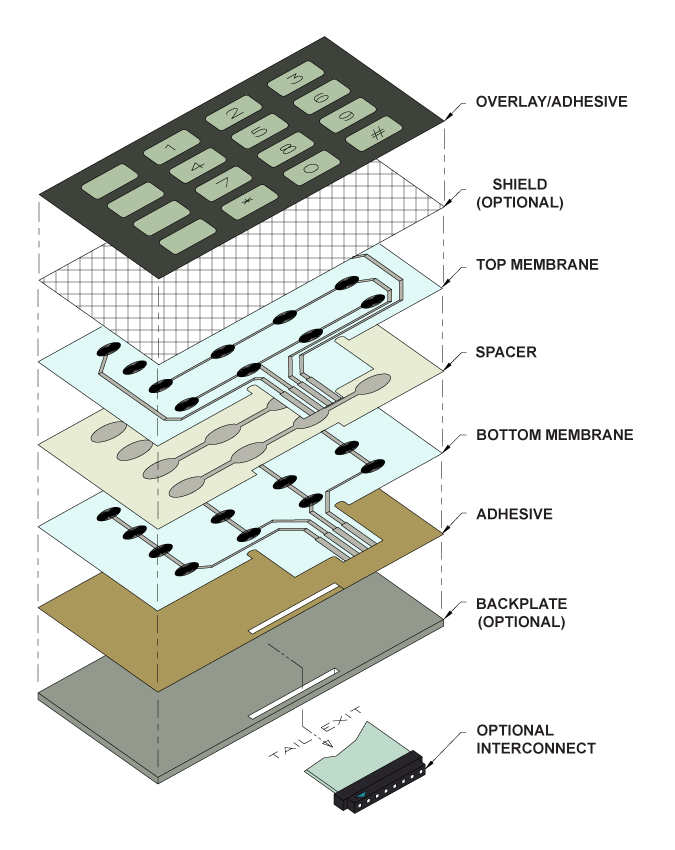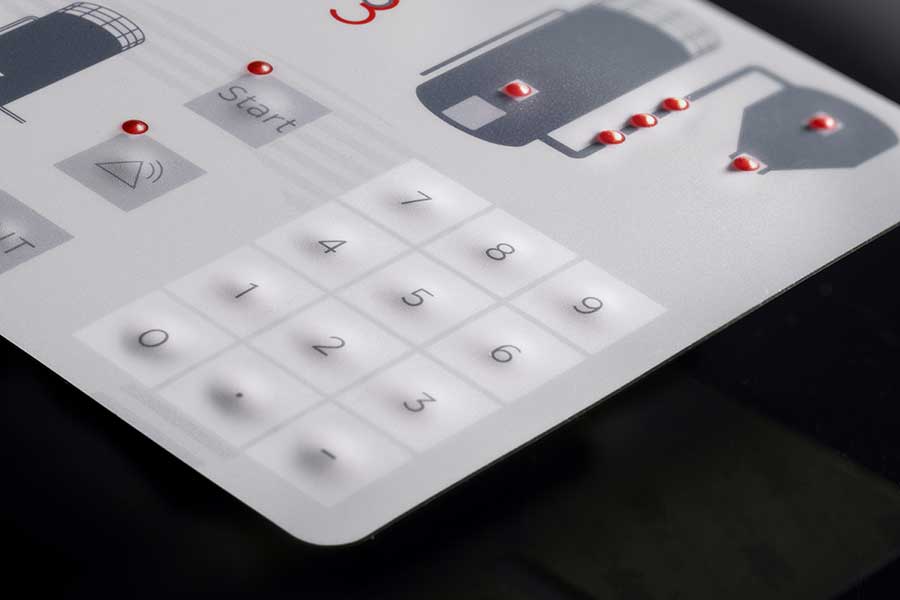The Duty of a Membrane Switch in Modern Touch Interfaces and Controls
The Duty of a Membrane Switch in Modern Touch Interfaces and Controls
Blog Article
Understanding the Capability of Membrane Changes for Interface Tools
The capability of membrane layer switches over represents a substantial improvement in customer interface design, integrating efficiency with aesthetic convenience. As markets increasingly prioritize customer experience, understanding the nuances of membrane switch modern technology becomes crucial.
What Are Membrane Buttons?
Membrane layer switches are cutting-edge user interface tools that help with user communication with digital tools. These flexible parts are composed of several layers, including a visuals overlay, spacer, and a printed circuit layer. The layout permits a smooth integration right into different digital devices, boosting both the visual and practical facets of interface.
Membrane layer buttons are commonly utilized in a variety of applications, from home devices to commercial equipment and medical tools. Their building commonly includes a slim profile, making them a suitable option for portable designs. The responsive responses provided by these switches can be engineered to satisfy specific individual preferences, making sure reliable communication between the customer and the gadget.
Longevity is an additional considerable benefit of membrane layer switches, as they are immune to dirt, wetness, and chemicals, which boosts their life expectancy in requiring environments. In addition, these buttons can be tailored in terms of shape, dimension, and graphic design, enabling for branding and user-specific functions. Generally, membrane switches represent a useful solution for boosting customer experience in electronic devices, integrating performance with visual appeal in an efficient way.
Exactly How Membrane Layer Changes Job
Operating on a straightforward principle, membrane layer changes use a split building to sign up user input efficiently. Each button contains several layers, including a printed circuit layer, a spacer layer, and a leading graphic layer, which are created to interact perfectly. When a customer presses the leading layer, it compresses the spacer layer, bringing the conductive elements of the circuit layer into contact with each various other.
This contact produces a shut circuit, signaling the tool to execute a details feature. The style permits numerous configurations, consisting of tactile feedback, which can improve the customer experience by offering a physical sensation upon activation. The materials made use of in membrane switches frequently include adaptable substratums, such as polyester or polycarbonate, which guarantee toughness and durability versus damage.

Key Advantages of Membrane Switches

One more substantial advantage is their density. Membrane buttons are slim and lightweight, which enables manufacturers to save area in their gadgets without giving up functionality. This function is particularly advantageous in applications where weight and quantity are essential considerations.
In addition, membrane layer switches are resistant to dirt, dampness, and chemicals, enhancing their sturdiness. This resilience expands their life-span and reduces the demand for frequent substitutes, leading to cost savings in time.
Moreover, the tactile comments provided by membrane layer switches can be enhanced to enhance directory user interaction. They can include features such as elevated buttons or audible clicks, enhancing functionality and user experience.
Applications Throughout Industries
Individual user interface gadgets utilizing membrane layer switches are common in a vast selection of markets, showcasing their adaptability and capability. Membrane Switch. In the medical market, membrane switches are indispensable to gadgets such as diagnostic devices and individual surveillance systems, where their toughness and ease of cleaning are crucial for keeping hygiene criteria. In the automobile industry, these switches are used in dashboard controls and infotainment systems, offering a streamlined and modern-day user interface for users.
Furthermore, the customer electronics industry advantages from membrane buttons in devices and handheld tools, where small layout and user-friendly interfaces boost customer experience. Industrial applications additionally utilize membrane layer changes for control board in machinery and automation systems, highlighting their robustness and resistance to severe environments.
In the aerospace and defense sectors, membrane layer buttons are made use of in cockpit controls and tools, where dependability and efficiency under severe problems are vital. click here now Furthermore, the video gaming industry increasingly incorporates membrane switches in controllers and arcade equipments, adding to an appealing user experience. Overall, the versatility of membrane layer changes enables their prevalent use across many industries, underscoring their value in contemporary user interface layout.
Future Patterns in Membrane Layer Change Technology

Furthermore, the usage of innovative materials, such as polycarbonate and polyester films, is expected to climb, giving enhanced longevity and resistance to environmental stressors. These materials contribute to the general long life of membrane switches, making them appropriate for harsher industrial applications.
In addition, the incorporation of smart innovation, consisting of IoT connection, will certainly make it possible for membrane buttons to interact with various other gadgets and systems, assisting in an extra interactive customer experience. This fad aligns with the growing anonymous need for clever devices throughout numerous sectors, from healthcare to consumer electronic devices.
Last but not least, customization options are prepared for to increase, permitting suppliers to develop bespoke options customized to details customer demands and choices. These advancements will position membrane layer buttons as crucial parts in the advancement of customer interface modern technology.
Verdict
In verdict, membrane switches over represent a pivotal improvement in user interface modern technology, offering a trusted and versatile remedy for diverse digital applications. As advancements in product science and touch noticing modern technologies continue, the capability and applicability of membrane buttons are expected to increase, reinforcing their relevance in modern-day electronic gadgets.
Report this page